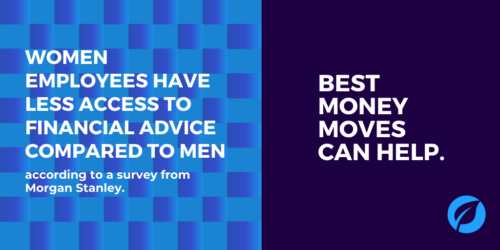The COVID-19 pandemic led to an unprecedented number of women exiting the workforce. Academics and employers alike have coined the term “she-cession” to highlight this exodus, particularly women with young children
There are two key drivers behind this phenomenon, according to an International Monetary Fund (IMF) report. One driver is women work in occupations and industries that were disproportionately affected by COVID-related job losses. Driver two is, school closures forced women to choose between caregiving and their career.
Here are 4 ways organizations can support working women through this difficult period.
1. Support working women with on-site childcare or subsidies.
Amid school closures and limited daycare options, data shows that the burden of childcare has had detrimental effects on women’s employment. This is largely because societal expectations position women as the primary caregiver, even if that comes at the expense of their job. According to an IMF report, the burden of childcare accounts for 45% of the increase in the employment gap between men and women.
By offering childcare benefits like on-site daycare or subsidies, companies can help support women as both employees and working moms without the stress and costs of childcare. In fact, childcare benefits show that your company is a family-friendly employer, which can go a long way in attracting and retaining top talent.
2. Consider menstrual leave as an added health benefit.
Menstruating employees may experience menstrual health issues that can impede work performance, such as period pain and menopause symptoms. With a focus on equity and employee inclusion, companies are starting to incorporate menstrual leave into employee benefit packages.
Menstrual leave would allow employees to take time off for menstrual or menopausal symptoms, in addition to their regular vacation and sick leave. This allows employees to recover without the pressures of 24/7 productivity. Moreover, it helps foster inclusivity within the workplace and increase company-employee trust.
3. Focus on financial empowerment to support working women.
Across different indicators of financial wellness, women tend to report a lower level of financial wellness compared to men. Women employees have less access to financial advice compared to men, according to a Morgan Stanley survey, and they’re less likely to express a need for financial advice to their employers.
To promote financial wellbeing, specifically women’s financial empowerment, companies can invest in financial wellness programs and tailor them to the needs of working women. From loan calculators to money coaching, financial wellness resources can help equip women with the necessary tools to meet their personal finance goals (e.g., planning for college or learning about stock investments). Moreover, this can help address financial gender gaps, like wealth and access to advice.
4. Invest in accessible breastfeeding resources.
Transitioning back to the workplace is often difficult, and it even more challenging for breastfeeding parents. Studies have shown that breastfeeding has benefits for both parent and baby; however, most work environments don’t adequately support breastfeeding employees. This is one of many reasons why many women feel forced to choose between their jobs and caregiving.
Companies can extend support by offering breastfeeding resources. A simple way to start is by providing reasonable and protected break time for nursing employees to pump their breast milk. Some companies have even invested in breast milk delivery services, so moms can send home milk even on work travel. Regardless of the solution, it is important that company policy is implemented to protect the rights of breastfeeding employees and ensure that they don’t receive formal or informal penalties.
Attract and retain top talent with financial wellness solutions from Best Money Moves.
Best Money Moves is a financial wellness solution designed to help dial down employees’ most top-of-mind financial stresses. As a comprehensive financial wellbeing solution, Best Money Moves offers 1:1 money coaching, budgeting tools and other resources to improve employee financial wellbeing. Our AI platform, with a human-centered design, is easy to use and fit for employees of any age.
Whether it be college planning or securing a mortgage, Best Money Moves can guide employees through the most difficult financial times and topics. Our dedicated resources, partner offerings and 700+ article library make Best Money Moves a leading benefit in bettering employee financial wellness.
To learn more about Best Money Moves Financial Wellness Platform, let’s schedule a call. Contact us and we’ll reach out to you soon.


